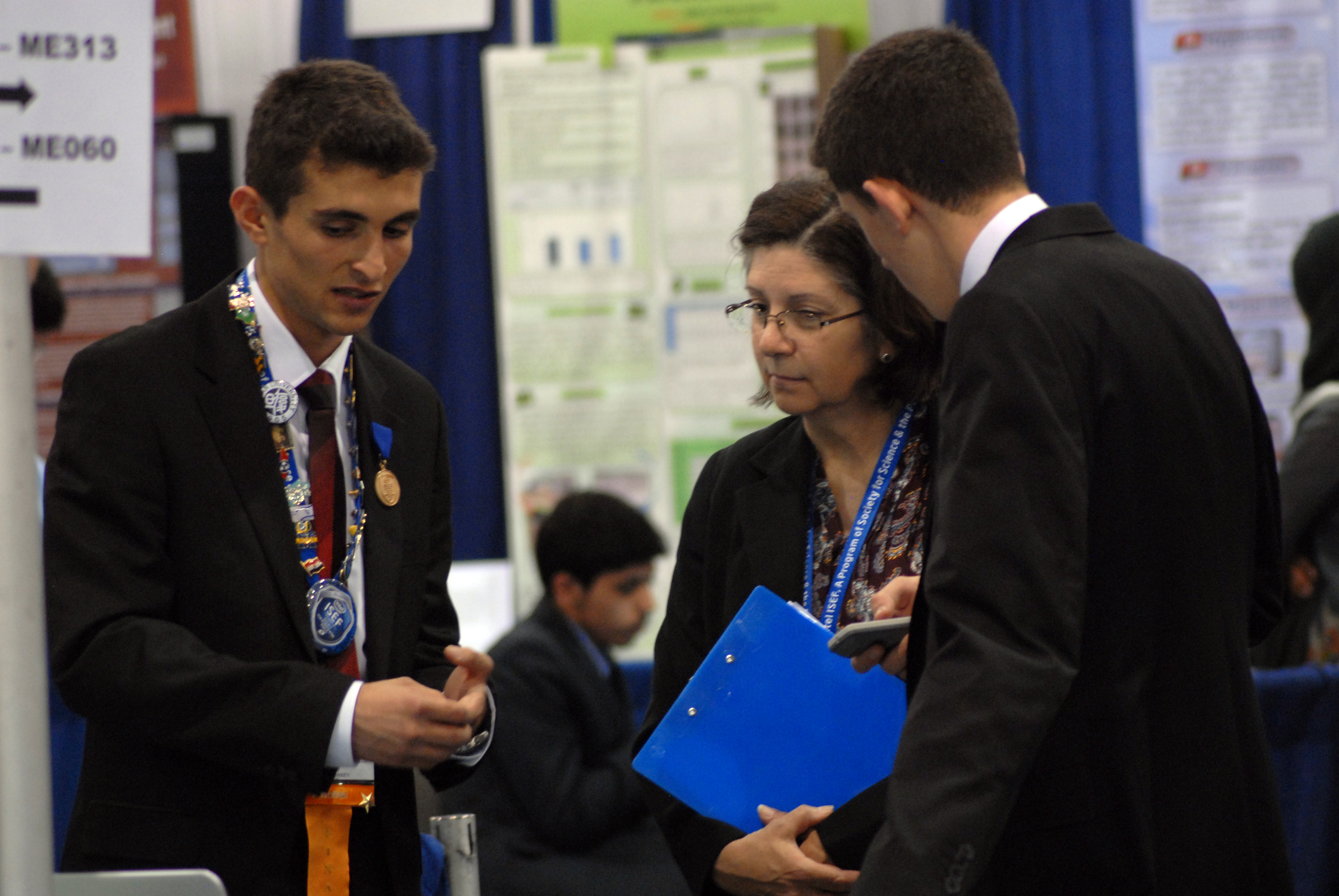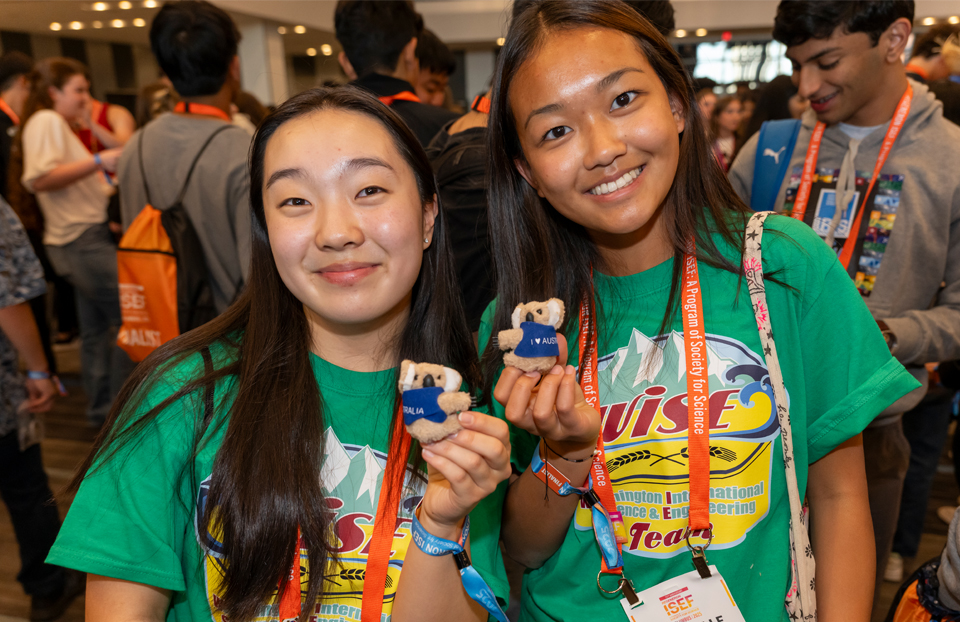Support young scientists: Judge at Intel ISEF 2014

Chris Gould is the Judging Chair of the Intel International Science and Engineering Fair 2014, being held May 11-16 in Los Angeles, California. Judges, volunteers, and interpreters are still needed to support the fair.
My first contact with Society for Science & the Public, then known as Science Service, was when I was a kid in the early 1960s. My parents gave me a subscription to Science Newsletter (now Science News). I still remember being impressed by a story about someone calculating a million digits of pi. My parents also signed me up for “Things of Science,” a Society program where every month I got a blue box of goodies that would help kids explore some aspect of science. At the time there was a big push to get kids interested in science (this was shortly after Sputnik), but I didn’t need a push. I was always fascinated by science and knew from a very early age that I wanted to be a scientist, just not what kind of scientist. The Society was instrumental in keeping the flames of passion burning.
I also dreamed of going to ISEF back in those days, but I never had a chance to qualify because at the time there weren’t any science fairs affiliated with the Society in the southern California area. I had a book about how to do a science fair project with pictures from ISEF in it. It’s the granddaddy of all science fairs, and the one to which all science fairs ought to aspire. Young scientists who are truly interested in science and have done something that they want to talk about have an obvious connection with this event where their work can be showcased.
I reconnected with the Society as an adult because I’ve been working for the California State Science Fair for over 30 years in various capacities. I wanted other students to have the chance to attend Intel ISEF, so I kept promoting it at both the state and county fairs and tried to convince fairs to affiliate with the Society. The California State Science Fair also got involved in the Society’s various middle school student programs, and what is now known as Broadcom MASTERS.
Because of that work, when Intel ISEF came to Los Angeles three years ago, I already had a relationship with the Society . When they reached out to me about becoming the Judging Chair, I leaped at the chance.
My job as the Intel ISEF Judging Chair is to make sure that there are enough judges to ensure that every single student in every single category gets a fair hearing for their project, and an adequate opportunity to interact with experts in their field. Students who make it to Intel ISEF have typically gone through several layers of qualifying fairs and they deserve to be treated with respect. This means that I need to recruit enough judges so that each student gets an adequate number of interviews. My goal this year is for each project to have 10 interviews with different judges.
I also have to make sure that the judges are properly trained and interact with the students in a positive manner that allows the students to benefit from their experience. Year after year students say that the most important part of Intel ISEF for them is the interaction with judges. They get the opportunity to bounce their ideas off of experts in the field. For some of them, this is their first chance to do so. Others may have worked in connection with a research lab or professional scientists, but this still offers an opportunity for them to present what they have done to someone who doesn’t already buy into it, and to be tested about whether they actually know and understand the science behind what they are doing.
More than 1,000 judges are needed in order for us to reach the goal of having ten interviews for each project. We particularly need judges in the life sciences this year; specifically plant sciences, microbiology, and biochemistry. Math is also a category where we need to recruit additional volunteers. As of today, we are still recruiting judges for all 17 categories.
People who have judged at Intel ISEF in the past are often the most enthusiastic about recruiting new judges, because they know what a big deal it is. More than 200 of the judges who participate each year have judged before, and are traveling to Los Angeles at their own expense in order to participate again. This doesn’t include about the same number of past judges who live locally and served in 2011 when Intel ISEF first came to Los Angeles.
If you’ve never been to Intel ISEF, it’s difficult to appreciate the scale of the event. The California State Science Fair has about 1,000 students show up each year, so I’m not unduly impressed by the large number of people in the building. [More than 1,500 finalists from more than 70 countries, regions, and territories will compete at Intel ISEF 2014.] However, there is a different character to Intel ISEF than any other science fair. Not the least of which is that all the projects are so good. They have to be in order to have won top prizes in the competitive fairs that qualify them for Intel ISEF. The highlights video (below) from Intel ISEF 2013 can give you an idea of the Intel ISEF experience:
It’s hard to experience the excitement of Intel ISEF and not be inspired. I strongly encourage anyone who is interested to apply to be a Grand Award judge. Grand Award Judges must have a minimum of six years related professional experience beyond receiving their B.A., B.S., or Master’s degree OR a Ph.D., M.D., or equivalent (D.O., Ed.D., D.D.S., D.V.M., etc.). Judges often include university faculty and scientists, industrial engineers and scientists, representatives of private and federal research centers and agencies, and medical researchers.
Even if you don’t meet the qualifications to be a Grand Award judge, you can still participate in Intel ISEF. We also need more than 500 general volunteers and 200 interpreters in multiple languages.


